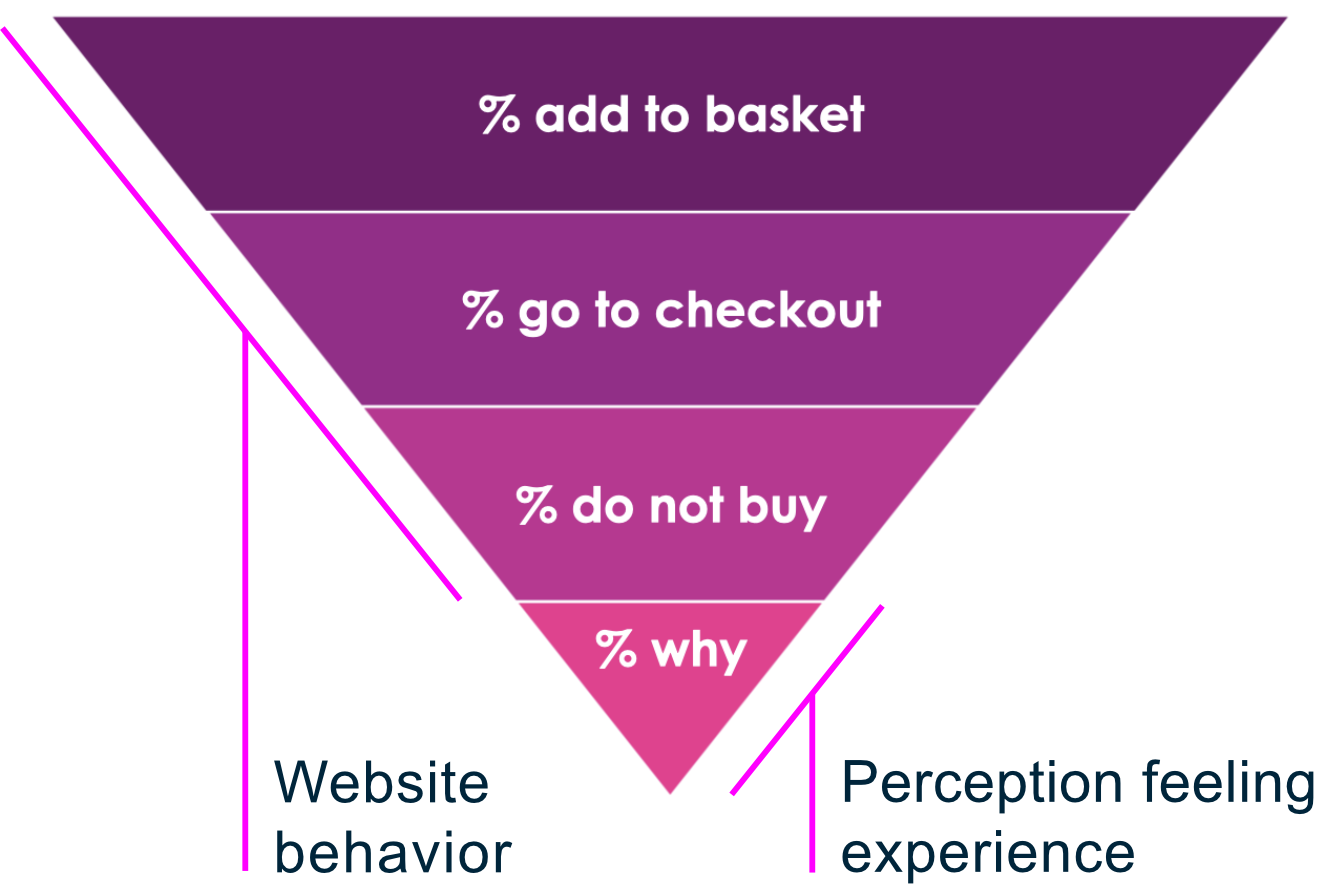5 Steps to ensure your digital CX program delivers results

The importance of CX has grown suddenly and dramatically since 2019, with the COVID-19 pandemic accelerating customer expectations for digital interactions and services.
Partly due to the global pandemic, this phenomenal increase has forced brands to add more channels and truly embrace digital transformation in their organization.
Against this backdrop there has never been a busier time for most digital CX professionals, and the work they do has never been more critical. In fact, Gartner’s 2021 Board of Directors (BoDs) Survey found that seven in ten BoDs have accelerated their digital business initiatives in the wake of Covid-19 Disruption.
But the heat is on, and that means they’ve got to achieve much more, much faster. It’s not surprising that the world of CX is seeing unprecedented investment in new technologies to tackle the challenge. This technology is helping to establish the right listening posts in the right places and enabling human-centered insight that helps to refine and improve customer journeys.
Yet CX does not happen in a vacuum and is most effective when working in coordination with other teams such as product development, customer service, contact centres and many more who play a part in delivering customer experience.
We’ve developed this five-step guide to keep pace with CX technology and best practices and align with various teams across the business to ensure your CX program has the right foundation to deliver results for your organization.
1. Focus on the business
We’ve all had the experience of shopping online and either having difficulty finding what we need, or on the flip side going through a seamless checkout experience. Who plays a part in delivering these everyday digital customer experiences?
Let’s take the example of a CX program at a digital retailer. The CX team is responsible for running the customer feedback and reporting program. Others such as user experience design or product management help to create and optimize the digital experience for moments such as product discovery or the shopping cart experience. Performance reporting, digital marketing and executive leadership also have a stake in shaping the customer journey.
When teams are not engaged, or action gets lost in translation, it can result in a poor customer experience. To bring the teams into alignment, first ensure your CX program is asking the right questions at the right moments. Does the survey or question solicit feedback that can drive action? Is the question necessary, and can the customer response support other goals across the business?
For example, the customer feedback program is live and customer responses are coming in. Working backwards from that point, ask the three “whys” to get down to the true purpose of each feedback channel:
- Why did we launch this digital purchasers’ survey?
Because we need to know why visitors are not purchasing from our website - Why are we interested in non-purchasers from the website?
Because the digital channel is very important to the business - Why is the digital channel important to the business?
Because we have a three-year strategy to grow our online channel sales by 30%.
Did you know 97% of mobile subscribers will read an SMS (text) It’s all too easy to focus on operational conversations once surveys are launched or even during set-up. When evolving a program, bringing on new channels or designing for additional surveys, it’s important to check we’ve always got the original goals in focus and in our sights, such as:
- Increase conversion
- Increase growth
- Increase customer retention
All program activities should support and directly link to these outcomes and listening posts must be designed with them in mind. This probably means thinking about accessing relevant data, bringing over operational data alongside survey data. When this link is included from the outset, the project will be set up for success and the impact on business objectives will be measurable.
All of this will have us talking the Executive team’s language – allowing us to engage with them, show them the value of the program, and make needed changes within our organization.
Good enough is often good-to-go
It’s worth noting that to wait for perfection in the early stages of program design (or re-design), might mean waiting for a very long time. An efficient CX professional needs to be pragmatic:
in other words, get the program going when it’s “good enough”. For the business, this could mean the difference between making a decision backed with some information and making
a decision with no information. Something is always better than nothing. Once the program’s rolling, it’ll be possible to refine the approach to deliver the right insights to the right people, at the
right time, in the right format. But think iterative, not absolute. It’s always admirable to strive for perfection of course – but that shouldn’t be allowed to induce ‘analysis paralysis’.
2. Conduct a data audit
Once the customer feedback program has been realigned to your organization’s business objectives, it can be difficult to act on insights due to a lack of contextual information. For example,
you may have survey responses from customers, but can you pair that data with purchase history, product search queries and other metrics? To do so will take both technical coordination
as well as cross-team cooperation to paint a more complete customer profile.
Data is a crucial part of any CX program, and this is particularly true of digital programs because of the inherent wealth of digital data that can be used to enrich customer feedback. To ensure
this data is being used to its greatest effect, it’s worth doing the following in the design phase:
That third point is critical, because it ensures the program is designed to enrich the customer profile across data sets. For example, if one of the business objectives is to increase customer spend, then it’s
important to measure basket or checkout value. This is perhaps the single biggest challenge to the design of the micro-survey at each stage. Has the design considered its place in the larger journey
the customer is taking? Setting the data in context across the journey can make it easier to interpret the data, which allows us to plan the right course of action or issue resolution.
At this point, with all the assembled data, remember that digital CX is not a standalone channel. It’s part of the mix; customers move across channels regularly during their journey, even
during a single transaction. For example, a customer calls the customer service number and also spends time browsing the website. Connecting both of those behaviors together perhaps within your
organization’s contact database provides more context to the scores and comments gathered in feedback surveys.
3. Review the survey triggers
Even more than traditional programs, digital CX programs must stay agile to stay successful. Our third recommendation focuses on optimizing the technical aspects of the CX program. Today’s technology can reach customers right where they are by asking questions personalized to their digital experience. For example a shift to more agile digital surveys can identify customer behaviors and recommend action to help continue the sale or drive deeper engagement.
For example, when a user clicks on the Add to Basket button, but then moves the mouse off the website, the system can display an alert:
We notice you added to your basket, what stopped you from purchasing?
This trigger message can be edited to display a discount code or other purchase incentives that can help nudge the sale to completion. Smart triggering can help to identify issues like technical difficulties, incomplete product information, incorrect pricing and more.
Digital feedback can identify how users have interacted with a website, and how to optimize their experience.
For example, users who used the Search function and browsed more than three results pages can be identified as a user group to be queried. Design survey questions to probe the
hypothesis that the Search function didn’t meet their needs since they browsed so many results:
Were you able to find the information you needed through our Search bar? If not – what went wrong?
Another example would be to ask if the user wants to speak to a live agent. If yes, the live chat feature would launch and continue to engage the customer to address their needs. In either case, it’s more important than ever to define the key moments that matter, so insight-based actions can be concentrated on those that will have the greatest contribute to achieving business goals.
4. Review questions and selection of the CX metric
Now that the data audit is complete, and the survey triggers are reviewed, it’s time to reconsider the objective and performance of each survey question. Adjust your questions to ask the why of the behavior. Combine your data with other data sets to get the full picture before surveying. Not wasting customers’ time is a
key consideration, but this is also about keeping data focused on what really matters to the customer and the business. Remember, every additional question needs reporting and analysis, so be sure that work is worthwhile.
Different stakeholders in the CX ecosystem may have different ideas about what matters most. CES (Customer Effort Score) metrics are great for the website design team (and positive findings can be strong predictors of customer loyalty). NPS (Net Promoter Score) and CSAT (Customer Satisfaction) metrics may be considered
more important by other stakeholders because they are interpreted as measuring the whole relationship between the business and its customers, but they are less helpful in understanding specific transactional moments in the customer journey.
For example, while it’s important to know if the customer would recommend the product to others, teams who manage the digital experience need more tangible feedback on how to improve the overall digital customer experience. Asking whether a workflow was easy or hard to complete, also known as the customer ease metric, would
yield behavioral insights that can re-shape the digital experience. A simple change in the way the question was phrased can make all the difference. It can drive an increase in responses since the question is more intuitive to the customer, and the feedback can support digital teams who are ultimately responsible for changing the
digital experience.
Many CX metrics are all useful, but in the end, what matters is that your chosen CX metric helps drive your desired business outcomes.
5. Test the insights – share the glory

So, how can you tell if a program is successful and is likely to get the engagement needed to continue?
You can follow the trail of digital customer behavior, but to truly know the customer’s “why” that feedback comes through a digital survey. And like any investment into technology or processes, it’s necessary to define your business objectives and build a high performance, measurable program to achieve your desired goals,
and share the success.
Delivering insights across teams requires the skills of a translator or diplomat. You’re looking to make CX insights relevant to larger organizational picture. And to do so, you want to demonstrate that your program delivers the right surveys at the right time, and that feedback collected is connected to action.
An example metric that can be presented to the Digital team:
- Desired business outcome = increase conversion
- Sales funnel calculation = X number of people add to basket, X number try to checkout, X number fail, X number fail because of (reason).
- Go back to Step One if this is not working!
Explaining carefully why a program has been devised in the way that it has, and being prepared to outline the benefits of the choices made, should reinforce the program’s alignment to business-wide objectives.
Prepare the ground early by building a network of stakeholders. Build their trust in the CX team’s professionalism by explaining why the work matters to the business and listening to stakeholders’ views. Being agile enough to adapt is a key quality, but always act in alignment with the project’s fundamental objectives,
as outlined in Step One.
And, of course, keep everyone engaged throughout the process and make sure the reporting and analytics are appropriately shared to deepen future buy-in.
Conclusion
We hope that the five steps outlined in this guide will help CX professionals keep their programs aligned with business objectives to deliver human-centered insight that’s understood and shared across every business function.
At Forsta, we advise taking an iterative approach to rolling out programs. Go live soon, as it’s never going to be perfect at first. As the program evolves and changes, you can refine it and then expand it to ensure you’ve got all your channels covered (web, mobile, app, social, etc.), across your all touchpoints and
geographical regions.
Connecting the dots between research programs and business outcomes means recommendations derived from the insights will have a demonstrable cost, risk or benefit to the business. Building a plan for measurement into projects from the outset, based on the existing operational data sets you can access and data
sets the survey activity is expected to generate, will ensure that commercial benefits are demonstrable – and that will always aid stakeholder support and buy-in.
Related resources
Getting the balance right for KS&R
Getting the balance right for KS&R Tools used How we helped market research firm KS&R balance keeping their tailor-made approach to research with saving their people time. The challenge Creating custom-made research despite market pressures KS&R needed more than a standard survey solution. Their research required rich customization, razor-sharp methodologies, and the flexibility to reflect real-world decision-making. Off-the-shelf […]

Seamless success: How Harris Poll delivers excellence with Research HX
Seamless success: How Harris Poll delivers excellence with Research HX Seamless success: How Harris Poll delivers excellence with Research HX Harris Poll is a trailblazer in market research, offering clients a blend of custom research, syndicated studies, and thought leadership. From brand tracking and message testing to ad effectiveness studies, their work delivers the insights […]

Everything you need to know about buying market research software
Everything you need to know about buying market research software Webinar synopsis: Tune in for a deep dive into the smartest way to evaluate, select, and secure the right research technology for your organization. We will expose the most common pitfalls, break down the key buying criteria, and show you how to build a rock-solid […]

Learn more about our industry leading platform
FORSTA NEWSLETTER
Get industry insights that matter,
delivered direct to your inbox
We collect this information to send you free content, offers, and product updates. Visit our recently updated privacy policy for details on how we protect and manage your submitted data.